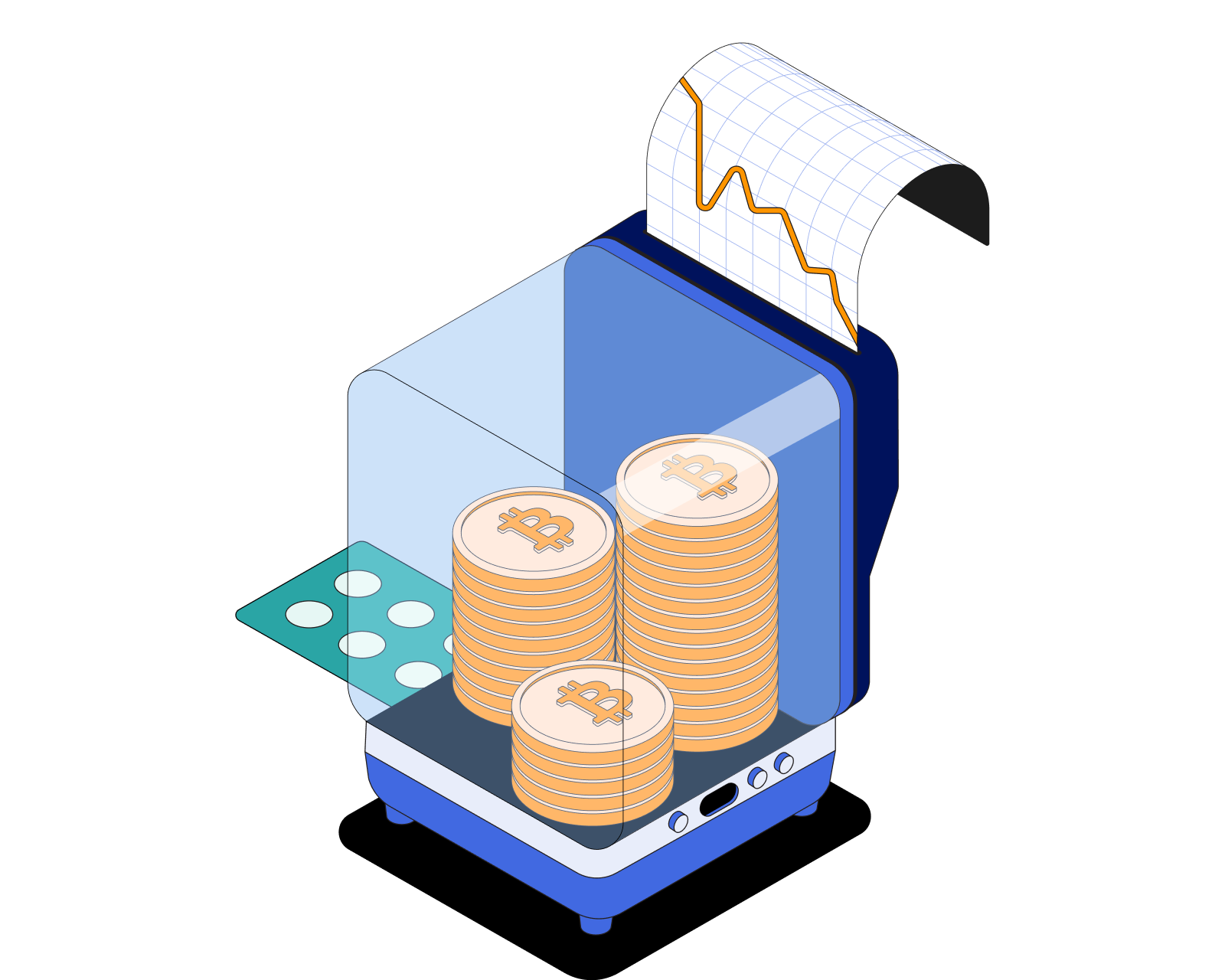What is Restaking

Table of Contents
What Is Restaking?
A common occurrence in the rapidly evolving world of blockchain technology is the development of new mechanisms and protocols that enhance the efficiency and security of existing and future crypto projects. When projects using these new mechanisms or protocols succeed, it is the entire crypto ecosystem that benefits, not just individual projects. One such innovative mechanism is restaking, the use of blockchain assets to secure other applications.
The concept of restaking introduces a groundbreaking way for people to utilize their staked cryptocurrency across various protocols simultaneously. This not only boosts reward potential but also significantly enhances the security and scalability of blockchain networks, benefiting the entire crypto ecosystem.
Staking and Proof-of-Stake
To understand restaking, it is essential first to grasp the concept of staking within the context of proof-of-stake (PoS) blockchain networks. PoS is a method used to keep blockchain networks safe and ensure that transactions are correct. They do this by coming to consensus, which means the various network participants come to an agreement about the information on the blockchain. This ensures that everyone in the network has the same data and agrees on which transactions are legitimate.
In PoS systems, validators (also known as stakers) lock up a certain amount of cryptocurrency to secure the network and participate in block creation and validation processes. This locked-up, or staked, cryptocurrency acts as collateral, ensuring validators act in the network’s best interest. Misbehavior by a validator can result in a portion of their staked assets being confiscated, commonly referred to as slashing.
Staking plays a crucial role in maintaining the security and integrity of PoS networks. The larger the amount of cryptocurrency staked, the more secure the network becomes. Validators earn rewards for their participation, typically in the form of interest on their staked assets.
Traditional staking has limitations, primarily that staked assets are locked within a single protocol and cannot be used elsewhere.
What is Restaking?
Restaking allows validators to redeploy their staked cryptocurrency across multiple PoS-based services simultaneously. This means that the same staked assets can secure multiple platforms, extending their utility and potential rewards. The concept of restaking addresses two limitations of traditional staking:
- Limited Reward Generation: Validators can generate multiple streams of income by redeploying their staked assets across more than one protocol.
- Shared Network Security: Large, mature blockchains can extend their robust security to networks and services that are just starting out. This can also enhance the overall security of blockchain networks.
Restaking enables participants to secure additional services such as oracle networks, data availability layers, and blockchain bridges.
Types of Restaking
Restaking can be categorized into two types: native restaking and liquid restaking. Most people will probably use liquid restaking, as native restaking requires expertise on running your own validator.
- Native Restaking: Advanced users with expertise in how to run their own validator, can use native restaking. Validators participating in native restaking must adopt additional node software specific to the restaking network or service, allowing them to securely offer their staked assets within the restaking ecosystem.
- Liquid Restaking: This type of restaking uses Liquid Staking Tokens (LSTs) such as Lido (STETH). Users simply deposit their LSTs into liquid restaking platforms, like Puffer, Ether.Fi, and Renzo, which handle the complexities of setting up and managing the service. These liquid restaking platforms provide users with liquid restaking tokens (LRTs) that can accrue interest and be traded for additional yield.
How Restaking Works
In both native and liquid restaking, the core idea is to maximize the use of staked assets by securing multiple protocols simultaneously. Native restaking requires operating a validator node and running additional software, while liquid restaking utilizes liquid staking tokens to provide a more flexible and accessible way for users to participate in restaking.
Native Restaking
Native restaking on platforms like EigenLayer is primarily aimed at users who operate their own validator. Here’s how native restaking works:
- Validator Node Requirement: To participate in native restaking, users must be operating a validator node for the specific PoS blockchain. This involves staking the native cryptocurrency to secure the network.
- Smart Contracts and Asset Management: Native restaking utilizes a set of smart contracts or protocols that manage the assets staked under a validator’s node. These contracts ensure that the staked assets are secure and properly managed.
- Additional Node Software: Validators who wish to engage in native restaking must download and run additional node software required for the restaking network or service. This software integrates with the existing validator setup.
- Acceptance of Restaking Terms: Validators must agree to the terms of the restaking program, which includes additional slashing conditions.
- Securing Protocols: By participating in native restaking, validators can redeploy their staked assets to secure multiple networks or services simultaneously. These may include data availability layers, new virtual machines, and oracle networks.
- Earning Additional Rewards: Validators earn extra rewards based on the number of additional protocols they help secure. The rewards are proportional to the level of participation and the protocols validated.
Liquid Restaking
Liquid restaking involves the use of liquid staking tokens (LSTs), which represent staked assets and can be further utilized in restaking protocols. Here’s how liquid restaking works:
- Staking with a Validator: Users initially stake their assets (e.g., the native cryptocurrency of the PoS blockchain) with a validator through liquid staking protocols. In return, they receive liquid staking tokens (LSTs) that represent their stake with the validator.
- Receiving LSTs: The LSTs act as a representation of the staked assets, allowing users to retain liquidity while their assets are staked. These tokens can be transferred, traded, or used in other protocols.
- Staking LSTs on Restaking Protocols: Users can then stake their LSTs on a liquid estaking protocol. This process involves depositing the LSTs into the liquid restaking protocol’s smart contracts.
- Exploring Actively Validated Services (AVSs): Once the LSTs are staked on the restaking protocol, users can explore available networks and services, called AVSs in Eigenlayer, to re-stake their tokens. These networks and services can acquire security infrastructure through the restaking process.
- Earning Additional Rewards: Similar to native restaking, users who participate in liquid restaking can earn extra rewards by securing multiple protocols. The rewards are distributed based on the number of protocols and the extent of participation.
- Opt-in Service with Additional Slashing Conditions: Just like in native restaking, users must accept additional slashing conditions set by each network and service. These conditions are designed to incentivize proper behavior and protect the security of the network or service.
Advantages of Restaking
Restaking offers several benefits to validators and the broader blockchain ecosystem:
- Increased Flexibility: Validators can use staked assets in various financial activities without the need to unstake, providing access to liquidity while maintaining the potential for rewards.
- Enhanced Reward Potential: By redeploying staked assets across multiple protocols, validators can generate multiple streams of income.
- Scalable Security: Restaking allows protocols to scale their security flexibly based on network demands, providing a cost-effective approach to network security scaling.
- Improved Security for New Protocols: New and developing protocols can access a large set of validators from the beginning, significantly strengthening their security.
Disadvantages and Risks of Restaking
While restaking offers numerous advantages, it also presents several risks and challenges:
- Centralization Risk: Validators offering higher APYs through restaking services may attract more delegations, potentially leading to stake centralization and loss of neutrality.
- Compounded Slashing Risk: Restaking introduces additional slashing conditions. Validators risk significant losses if they violate these conditions, as each protocol imposes different slashing terms.
- Smart Contract Vulnerabilities: Smart contracts used in restaking protocols can contain bugs or vulnerabilities that could lead to financial loss or exploitation.
- Counterparty Risk: Validators must trust third-party operators to manage their staked assets. If these operators fail to comply with network conditions, validators could face slashing penalties.
Examples of Restaking Protocols
EigenLayer is a prominent example of a restaking protocol on Ethereum. Other restaking protocols in early development include:
- Picasso on Solana
- Octopus 2.0 on Near
The Next Steps for Restaking
Restaking addresses key limitations in the traditional staking model. This innovation expands potential rewards for validators and also enhances network security by aggregating resources and sharing them across different platforms.
As restaking continues to evolve, it is likely to play a crucial role in the future of blockchain security and decentralized finance, despite the inherent risks and challenges.
Related guides
Start from here →

What is staking?
Learn about the power of staking.

What is DeFi?
Learn what makes decentralized finance (DeFi) apps work and how they compare to traditional financial products.
Read this article →
What is DeFi?
Learn what makes decentralized finance (DeFi) apps work and how they compare to traditional financial products.

What's a dApp?
Discover what dApps are, how they work, advantages and disadvantages, and more.
Read this article →
What's a dApp?
Discover what dApps are, how they work, advantages and disadvantages, and more.

What is liquidity?
Liquidity has several slightly different but interrelated meanings. For the purposes of crypto, liquidity most often refers to financial liquidity and market liquidity.
Read this article →
What is liquidity?
Liquidity has several slightly different but interrelated meanings. For the purposes of crypto, liquidity most often refers to financial liquidity and market liquidity.


What is Ethereum?
Understand Ethereum's key characteristics.

What are ERC-20 tokens?
Learn the basics of the Ethereum token standard, what ERC-20 tokens are used for, and how they work.
Read this article →
What are ERC-20 tokens?
Learn the basics of the Ethereum token standard, what ERC-20 tokens are used for, and how they work.

What's a smart contract?
Get the basics on the "software" that runs on decentralized networks.
Read this article →
What's a smart contract?
Get the basics on the "software" that runs on decentralized networks.
STAY AHEAD IN CRYPTO
Stay ahead in crypto with our weekly newsletter delivering the insights that matter most
Weekly crypto news, curated for you
Actionable insights and educational tips
Updates on products fueling economic freedom
No spam. Unsubscribe anytime.



Start investing safely with the Bitcoin.com Wallet
Over wallets created so far
Everything you need to buy, sell, trade, and invest your Bitcoin and cryptocurrency securely

© 2025 Saint Bitts LLC Bitcoin.com. All rights reserved


